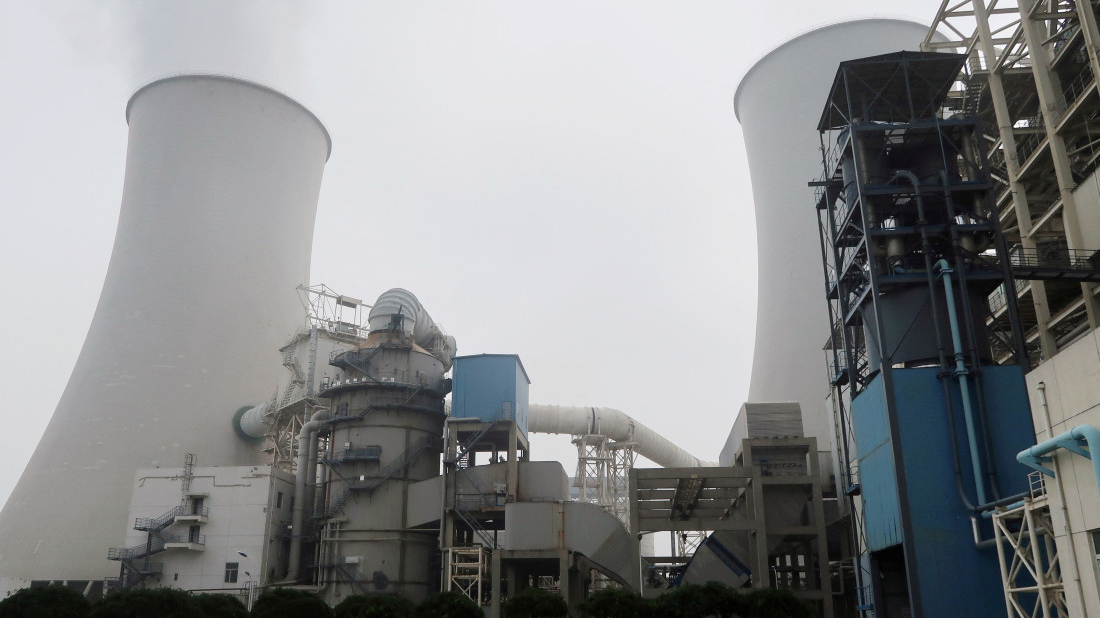U.S. interception of Skipper tanker signals harder line on Venezuela
Washington’s seizure of a tanker carrying Venezuelan oil shows a shift from financial sanctions to direct maritime action, further straining relatio...

It will become China's first integrated demonstration project at a port for green hydrogen production, transportation, storage, and usage
China Classification Society Certification Co Ltd, affiliated with the Ministry of Transport, awarded Weifang Port, a part of Shandong Port Group subsidiary Bohaiwan Port, the carbon neutrality certification on Oct. 15, marking it becoming China's first zero-carbon emission port.
The achievement is a major step toward China's carbon peak and neutrality goals and serves as a model for the port sector across the country, according to experts.
Weifang Port's carbon neutrality was achieved through a combination of emission-reduction measures, including the construction of wind power facilities, the use of hydrogen-powered vehicles, the promotion of electric energy alternatives, and the automation of key operations.
On Sept. 30, the port successfully connected its onshore distributed wind power project to the grid, making it the first of its kind in Shandong.
According to the port's estimates, compared to traditional coal-fired power plants generating the same amount of electricity, this wind power project will save 21,000 tons of standard coal annually, significantly benefiting the environment.
Recently, the port also launched an electricity-to-hydrogen project. It will become China's first integrated demonstration project at a port for green hydrogen production, transportation, storage, and usage, providing 5 million kWh of green electricity annually.
Russia’s human rights commissioner, Tatyana Moskalkova, has said that Ukraine has not provided Moscow with a list of thousands of children it alleges were taken illegally to Russia, despite the issue being discussed during talks in Istanbul.
Iranian authorities have seized a foreign tanker carrying more than 6 million litres of smuggled fuel in the Sea of Oman, detaining all 18 crew members on board.
An explosive device found in a vehicle linked to one of the alleged attackers in Bondi shooting has been secured and removed according to Police. The incident left 12 people dead.
The latest round of clashes between Thailand and Cambodia has left 15 Thai soldiers dead and 270 others injured, Thailand’s Ministry of Defence spokesman Surasant Kongsiri said at a press conference on Saturday.
Syrian President Ahmad al-Sharaa has offered condolences to President Donald Trump following an ISIS attack near the ancient city of Palmyra that killed two U.S. soldiers and a civilian interpreter, Syrian and U.S. officials said Sunday.
At least 37 people have been killed in flash floods triggered by torrential rain in Morocco's Atlantic coastal province of Safi, Moroccan authorities said on Monday (15 December).
Climatologists say Poland has logged its warmest December in 74 years, with 2025 continuing a run of above-average temperatures and repeated national records.
As the world marks the tenth anniversary of the Paris Agreement, progress in combating global climate change is mixed.
An extratropical cyclone has caused widespread disruption across Brazil’s São Paulo state, with powerful winds toppling trees and power lines, blocking streets and leaving large parts of the region without electricity.
Indonesia's military stepped up its relief efforts in three provinces on Sumatra island that have been devastated by deadly floods and landslides, and the country's vice president apologised for shortcomings in the response to last week's disaster.
You can download the AnewZ application from Play Store and the App Store.

What is your opinion on this topic?
Leave the first comment